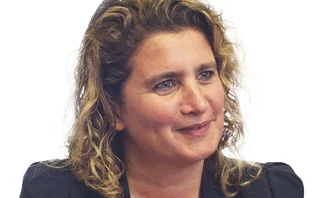
Best catastrophe modelling software: Aon Benfield
Insurance Risk Awards 2015: An open approach to the complex discipline of catastrophe modelling has paid off for Aon Benfield

Established 20 years ago as an in-house resource for its reinsurance broking business, Aon Benfield’s Impact Forecasting catastrophe model development centre began selling its models and the Elements loss calculation platform three years ago. The industry quickly realised that the company not only had some unique models, but also a modelling philosophy that was innovative and chimed with evolving attitudes towards more open and collaborative catastrophe modelling.
From the start, Impact Forecasting focused on the development of models for perils and territories where the major commercial modelling companies had not yet ventured, or where existing models lacked credibility. By partnering with clients and using their loss data, the company has been able to achieve results more reflective of clients’ experience. Among the areas where it has produced models where few existed before are central and eastern Europe, US, Canada and Asia floods, and US and UK terrorism.
Beyond the coverage of the perils, what has caught the attention of many insurers is the transparency of Impact Forecasting’s models. “The major challenge with catastrophe modelling is being able to understand what is happening inside the complex models and being able to influence the process. For this reason, we have made our platform open and transparent so users can see all the assumptions that are made in the models and can change them to align more closely with their own data and view of risk if they so wish,” says Adam Podlaha, global head of Impact Forecasting at Aon Benfield, who is based in London.
In a further step towards openness, Impact Forecasting has recently added support for the format developed by the Oasis open architecture loss-modelling consortium, enabling developers using the Oasis format to deploy their models in a full production environment. “We are committed to exploring ways to make the most of catastrophe models by working together as an industry. The open and customisable Elements platform helps to mitigate the need for insurers to install and learn new systems when looking to implement new models. We are pleased we can play a part in this trend for greater collaboration,” Podlaha says.
In parallel, Impact Forecasting has begun to make the models of third-party developers available on its platform. The first of these is an Australian flood model developed by Ambiental, which is based in Brighton, England. Justin Butler, founder and chief executive of Ambiental, said his company chose Elements as it offered “a highly customisable, easy-to-use, open and transparent platform that will help users get up-and-running quickly”.
The Impact Forecasting group has around 90 experts spread across research and development centres in Bangalore, Chicago, London, Prague and Singapore. So far, more than 15 clients use its models and the Elements platform, including a number of major players, with the client base continuing to grow rapidly, says Podlaha. RenaissanceRe uses the group’s European wind models and MS Frontier uses its central and eastern European flood models. Scor co-developed a French flood scenario model with Impact Forecasting. And AIG uses Elements as a platform on which to run its own models.
The major challenge with catastrophe modelling is being able to understand what is happening inside the complex models
Only users who have a paid subscription or are part of a corporate subscription are able to print or copy content.
To access these options, along with all other subscription benefits, please contact info@risk.net or view our subscription options here: http://subscriptions.risk.net/subscribe
You are currently unable to print this content. Please contact info@risk.net to find out more.
You are currently unable to copy this content. Please contact info@risk.net to find out more.
Copyright Infopro Digital Limited. All rights reserved.
As outlined in our terms and conditions, https://www.infopro-digital.com/terms-and-conditions/subscriptions/ (point 2.4), printing is limited to a single copy.
If you would like to purchase additional rights please email info@risk.net
Copyright Infopro Digital Limited. All rights reserved.
You may share this content using our article tools. As outlined in our terms and conditions, https://www.infopro-digital.com/terms-and-conditions/subscriptions/ (clause 2.4), an Authorised User may only make one copy of the materials for their own personal use. You must also comply with the restrictions in clause 2.5.
If you would like to purchase additional rights please email info@risk.net
More on Insurance
The future of life insurance
As the world constantly evolves and changes, so too does the life insurance industry, which is preparing for a multitude of challenges, particularly in three areas: interest rates, regulatory mandates and technology (software, underwriting tools and…
40% of insurers fail to specify climate as a key risk – LCP
Despite regulators’ urging, many UK and Irish insurers omit climate from risk statements, says report
Libor leaders: Prudential takes SOFR for a test drive
Test trades have allowed US insurer to start getting used to a life without Libor
Fed to push ahead with capital regime for single US insurer
Prudential faces risk capital add-ons unless it sheds “systemically important” label
Brexit dims hopes for Solvency II change in UK
Lawyers say political tensions may have killed off chance of reform, following PRA U-turn
BoE creates volatility adjustment ‘stepping stone’ for insurers
Dynamic VA may be used for assets that fail to qualify for matching adjustment, say experts
No plans to scrap systemic insurer rules, says IAIS chair
A US regulator claims Europeans asked IAIS to chart own course after FSB moved to ditch G-Sii list








